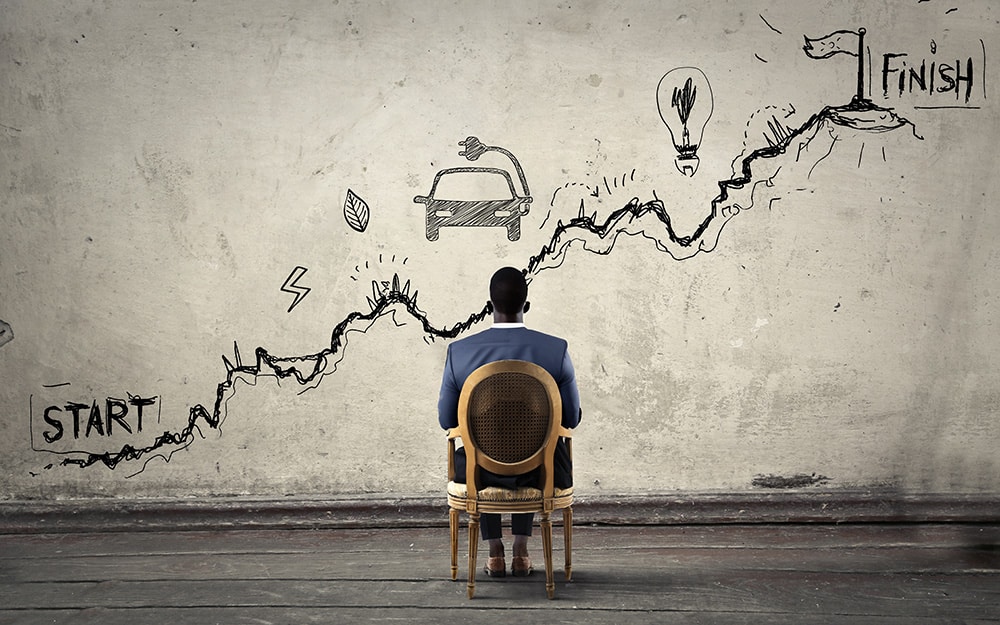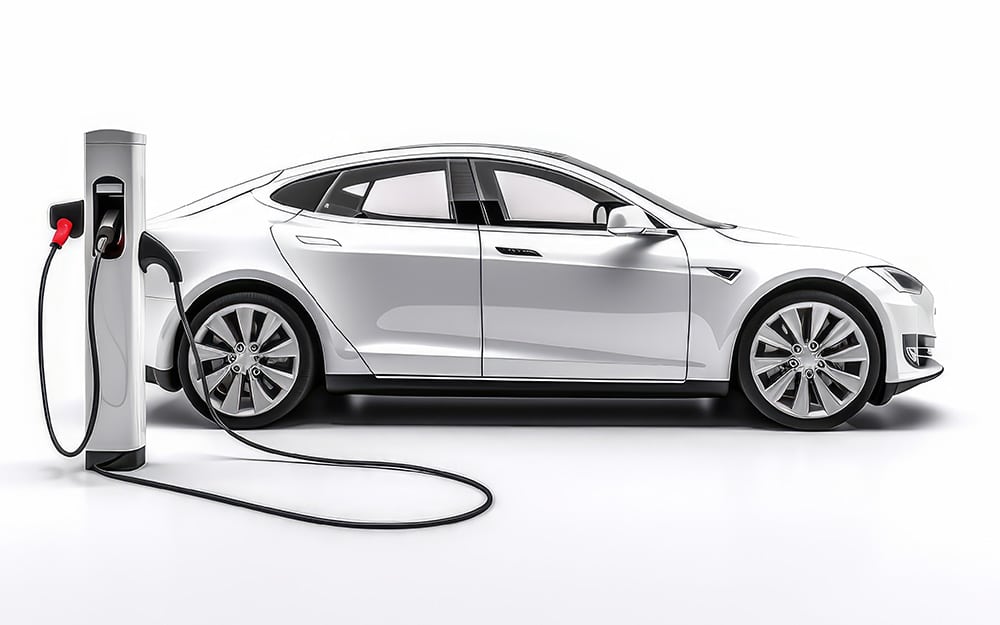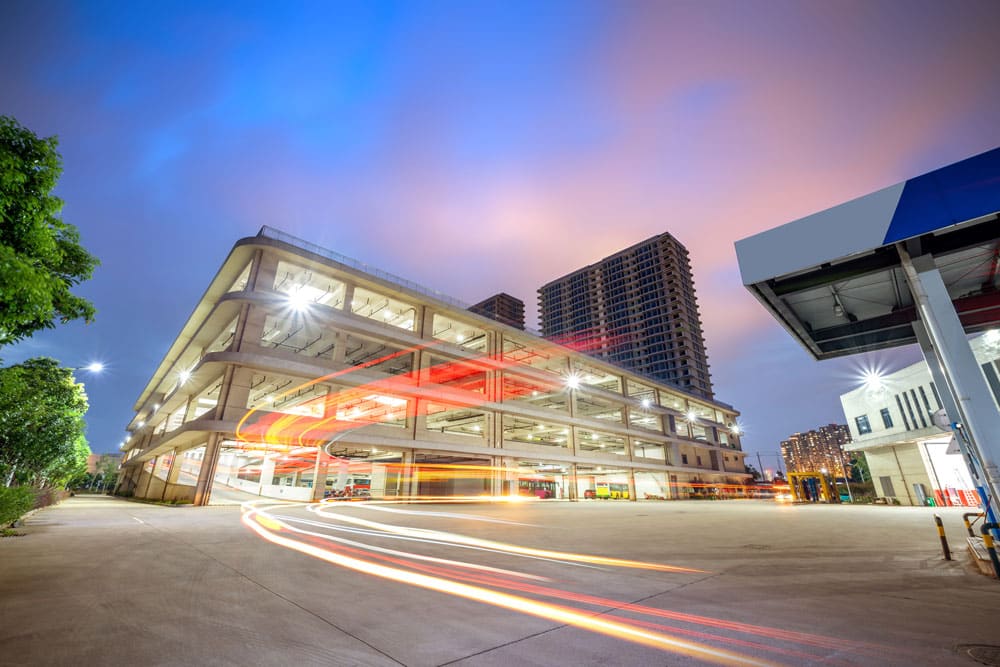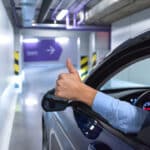The Green Standard
Advancing Sustainability in Parking
The first time I attended a sustainability conference, I tried to take advantage of a Q&A event they held dedicated to expanding sustainability to other industries. When I brought up parking, I was told that they didn’t want to discuss it because in just a few years most people wouldn’t be driving cars anymore, and they didn’t want to promote the use of single occupant vehicles in any way.
That was about 12 years ago. I don’t know about you, but I’m not any closer to giving up my personal vehicle than I was then. Of course, alternative transportation and mobility options are somewhat more accessible than there were then, with development making both a priority. But personal vehicles continue to be the primary mode of transportation for most, especially following the pandemic.
Thinking back on this interaction reminds me of how far our industry has come, not only shifting our efforts to incorporate greener solutions, but establishing ourselves as leaders in the sustainability on a global scale. When LEED certification first came along it became (and continues to be) the standard for sustainable planning, design, and construction. LEED is still the roadmap for providing people with healthier and more cost, energy, and material efficient places to live, work, and play.
The parking industry followed close behind, launching Parksmart as the established sustainability certification for our industry. Many did not think parking could contribute to sustainability, let alone play such a significant role in developing essential strategies, solutions, and even policies. These efforts have transformed not only stand-alone parking areas but contributed to the overall landscape of cities and communities.
On a similar note, for many years outside of the parking community, I was often asked what I would do with my career once people were no longer dependent upon cars and parking became obsolete. I heard it all the time. Of course, I was never too worried because I knew that at least in the U.S., it was unlikely that people would completely give up their vehicles any time soon. Further, our industry was pivoting and transforming in such a way to meet the evolving needs of communities, while implementing the resources, thought leadership, and collaboration necessary to contribute positively to the sustainability space.
When the trailblazers in our industry developed the Parksmart certification standard, it was perfectly designed to combine the established concepts of LEED with appropriate parking and transportation elements. LEED was an excellent blueprint for the creation of this transformative platform to develop new parking and mixed-use facilities to meet parking demands, reduce environmental impacts, and incorporate sustainable strategies and concepts that many had not considered prior. These stakeholders now had a benchmark when creating facilities that were not previously considered to contribute positively to the environment. Many organizations now implement Parksmart standards as a requirement for their new parking and mixed-use facilities.
Since the development and implementation of the Parksmart standard, our industry has not sat back on its laurels or seen that as “good enough.” Many organizations in the parking, transportation, and mobility space have established themselves as leaders in sustainability, developing and implementing strategies and solutions that not only exceed the established Parksmart standards, but will have a positive impact on the environment, and their communities for many years to come.
Of course, EVs are the most obvious example. Many cities, parking authorities, and institutions have established requirements for EV charging stations in their parking structures, lots, and curb spaces. Our industry has been vital to this development, encouraging and accelerating EV charging station requirements and standards that will help ensure that our infrastructure can support the inevitable increase in EV ownership. This forward-thinking approach will provide that as EVs continue to become more popular on our roadways, cities and communities won’t be playing catch up to support their electrical needs.
But EVs are just a drop in the bucket in terms of how far we’ve come. Nearly every organization or solution provider in our industry is constantly looking at opportunities to develop more sustainable versions of their products, both for the good of the environment but also to keep up with consumer and operational demands. Many new technology leaders have also come to the marketplace, bringing innovative solutions that support sustainability goals and objectives.
Parking, transportation, and mobility are now very well intertwined, as they should be. The customer journey no longer consists entirely of driving straight to one’s destination, parking, and a short walk. It now often includes a combination of driving, public transit, and mobility options like bikes or scooters. The parking industry has been integral to facilitating this transition, providing organizations and institutions with the tools, resources, and platforms to create the most sustainable parking and transportation experiences possible to get people where they are going with as minimal of impact as possible.
Parking technologies continue to gain traction and help to reduce the impacts of single occupant vehicles on the environment. For example, parking guidance systems and real-time mobile parking apps significantly reduce not only the amount of time spent looking for parking in lots, garages, and on streets, but they also reduce the level of carbon emissions put out during the search.
Another technology that continues to gain traction is touchless, app-free parking solutions. The recent pandemic accelerated this expansion as people felt more comfortable getting to their destinations in their vehicles (rather than public transit), while motivating them to seek opportunities to interact with as few outside people as possible. These solutions provide potential parkers with the option to locate a parking facility, park their vehicle, pay, and depart in the quickest and most efficient process possible. Further, they can help reduce staff, or allow them to focus on more valuable tasks like customer service or safety. On a broader scale, they help reduce the need for equipment and materials and the environmental impacts associated with both.
Many people outside of our industry (and maybe even in our industry) did not think sustainability was possible in this space; that that has been proven wrong time and again. Not only has the parking industry embraced sustainability, but we now have so many examples of developing and implementing strategies, solutions, and initiatives that are transforming cities and communities for the better.
Megan Leinart, CAPP, LEED AP BD+C, is President of Leinart Consulting.
-
Megan Leinart, CAPP, LEED AP BD+Chttps://parking-mobility-magazine.org/author/megan-leinart-capp-leed-ap-bdc/October 4, 2023

Take a Step Back to Plan
As we navigate the complexities of the rapidly expanding EV

Seven-Generation Decision-Making
A major factor of sustainability is thinking about how we

Electric Vehicle Charging Operations Research
Preliminary Results







